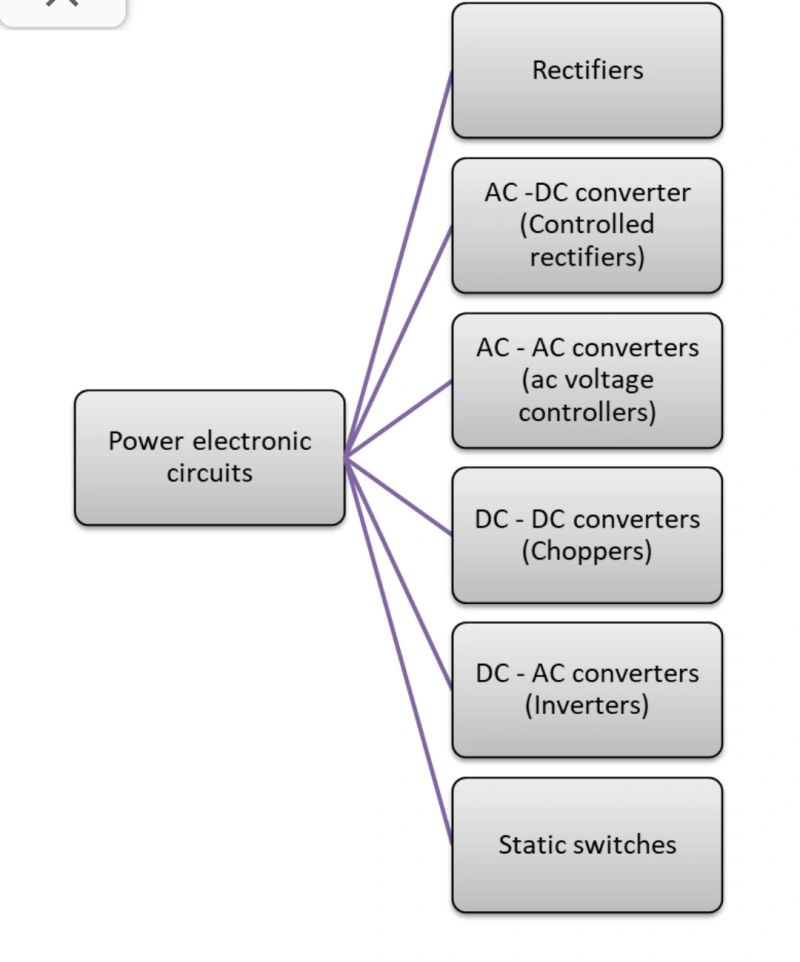
Power Electronic Circuits:- Types and Functions
Power electronic circuits are essential in efficiently converting and controlling electric power in modern electrical systems.
Each type of circuit plays a specific role in power conversion, ensuring optimal performance and energy management. Here’s an in-depth look at the various power electronic circuits:-
1. Rectifiers:-
Function: Convert alternating current (AC) into direct current (DC). Types:Uncontrolled Rectifiers: Use diodes and provide a fixed DC voltage output.Controlled Rectifiers: Utilize thyristors (SCRs) for regulating output voltage through phase control. Applications: Commonly found in power supplies, battery chargers, and DC power distribution systems.
2. AC-DC Converters (Controlled Rectifiers)
Function:- Convert AC to DC with precise control over output voltage and current.Operation: Employ switching devices like SCRs or IGBTs to adjust the phase angle of input AC and regulate the DC output. Applications: Essential in variable speed drives, DC motor controls, and systems requiring regenerative braking or energy recovery.
3. AC-AC Converters (AC Voltage Controllers)
Function: Convert AC signals without converting them to DC, modifying voltage, frequency, or phase. Types:Phase-Angle Controllers: Vary output AC voltage by adjusting the phase angle.Cycloconverters: Convert one AC frequency to another for speed control in motors. Applications: Used in light dimming systems, heating controls, motor soft starters, and industrial speed control systems
.4. DC-DC Converters (Choppers)
Function: Convert one DC voltage level to another, stepping it up or down as needed.Types:Buck Converters: Step down the voltage.Boost Converters: Step up the voltage.Buck-Boost Converters: Provide both step-up and step-down capabilities. Applications: Found in renewable energy systems, electric vehicles, and battery-operated devices to regulate voltage levels.
5. DC-AC Converters (Inverters)
Function: Convert DC power into AC power, allowing devices running on DC sources to power AC loads. Types:Single-phase Inverters: Used for household or small-scale applications.Three-phase Inverters: Suited for industrial applications and grid-tied systems. Applications: Commonly used in uninterruptible power supplies (UPS), solar power systems, and electric vehicles for converting battery or solar power into usable AC power.
6. Static Switches:-
Function: Switch power between circuits quickly and reliably, without mechanical movement. Types:Thyristor-based Switches: Provide fast switching for AC circuits, often used in motor control.
7. IGBT/MOSFET Switches: Allow high-speed switching in both AC and DC circuits. Applications: Vital in power distribution systems, emergency power switching, and industrial automation where high-speed and reliable switching is necessary.
